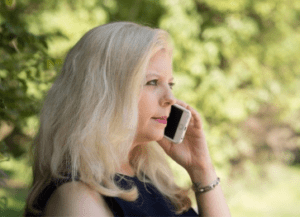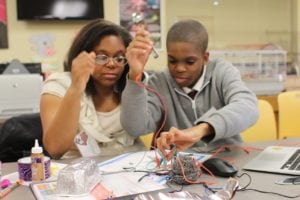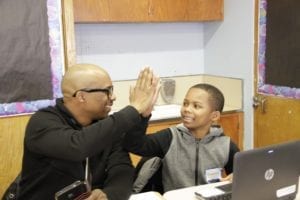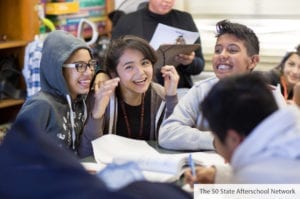5 Tips to Raise the Bar for Computer Science with Family Engagement
Parents can play an important role in supporting their children’s learning and pathways with technology. However, when programs have a family element, it often involves parents attending an end-of-program celebration to see what their kids have learned. This is an important start, but programs can do better.
Family Creative Learning, led by Ricarose Roque at the University of Colorado, Boulder, makes sure that parents get what they need to support youth in technology. Originally created by Roque and a team of researchers at the MIT Media Lab, Family Creative Learning is a community-based program that supports parents who have limited access to resources and social support around computing. Families participate in a series of workshops that are collaboratively implemented with staff from community organizations like Boys and Girls Clubs. Kids and their parents design and invent together using creative technologies like Makey Makey and Scratch.
Here are five take-aways from Family Creative Learning that successfully re-imagine family engagement, creating computing programs that put families at the center with kids and parents learning together.
1. Recruiting families is a serious undertaking.

It matters that someone they trust asks parents and guardians to attend. In between workshops, program staff call home to encourage continued participation. The project team also uses photos of families engaged in projects (and having fun) and make sure that different configurations of families are included in recruiting materials.
2. Building relationships is as important as building projects.

Roque and her team learned from families that they were attracted by the possibility of family time, sharing food together, and having fun while learning more about technology. In response, the team is intentional about setting aside time and space for families to get to know one another and for facilitators to get to know families. Every workshop starts with meals. Roque shares that “food is non-negotiable” as it communicates that program staff care.
3. Not a one-size fits all.

Family Creative Learning
In the first few workshops, structured activities help kids and parents get oriented with the tools. For example, the first workshop may start with an Animate Your Name activity in Scratch, which offers some structure along with room for creativity and choice. The remaining workshops allow families to design a project of their own. Facilitators play an important role in helping them realize their ideas. With this approach, staff and volunteers shift from being instructors to facilitators. They don’t tell families what to do; they encourage them to explore in ways suited for each family. For example, in one father-son team, the father’s involvement was limited and could have been perceived as disengagement. Close observation showed him to be an active facilitator, not a passive observer. In fact, this father explained how he intentionally let his son take the lead and helped as needed by giving encouragement instead of answers. In this way, he supported his son’s passion for technology and work with Scratch.
4. Connectedness and empowerment take time.

PowerMyLearning
The engagement of parent-child teams develops over time. Project staff check in with adults and kids separately. In this way parents can ask questions, express concerns, and get comfortable with the technology. This helps parents who might have opted for sitting back and watching passively. For one family, the workshops gave the mother a chance to learn technology and build her confidence. In the past she had avoided technical projects with her son. This time she came up with an idea for their project–making a violin while her son incorporated Makey Makey and Scratch. The connection made through the program continued as they talked about the project at home. The time invested was well worth it for this mother who “shared how pleased she was that her son was able to see her as ‘not just a mom.”
5. Make time to share, celebrate, and reflect.

Activities didn’t always go as planned. Facilitator feedback and reflection with other parents help parents understand how they can adjust and support their children. One mom wondered how she could be helpful since her daughters were more tech savvy. A facilitator assured her that she had something useful to offer–her feedback and encouragement were helping her daughters work on their projects. This mother could also draw from the experiences and feedback of other parents. During meals and debriefs families share and provide resources for one another.
We hope you will be inspired to read the work of Ricarose Roque and this research team including the blog in Parenting for a Digital Future and journal article,“I’m Not Just aMom”: Parents Developing Multiple Roles in Creative Computing.
You can also hear Ricarose Roque share her work in her own words on the archived webinar Tools, Ideas, and Strategies for Creative Computing in Afterschool by the Afterschool Alliance.

